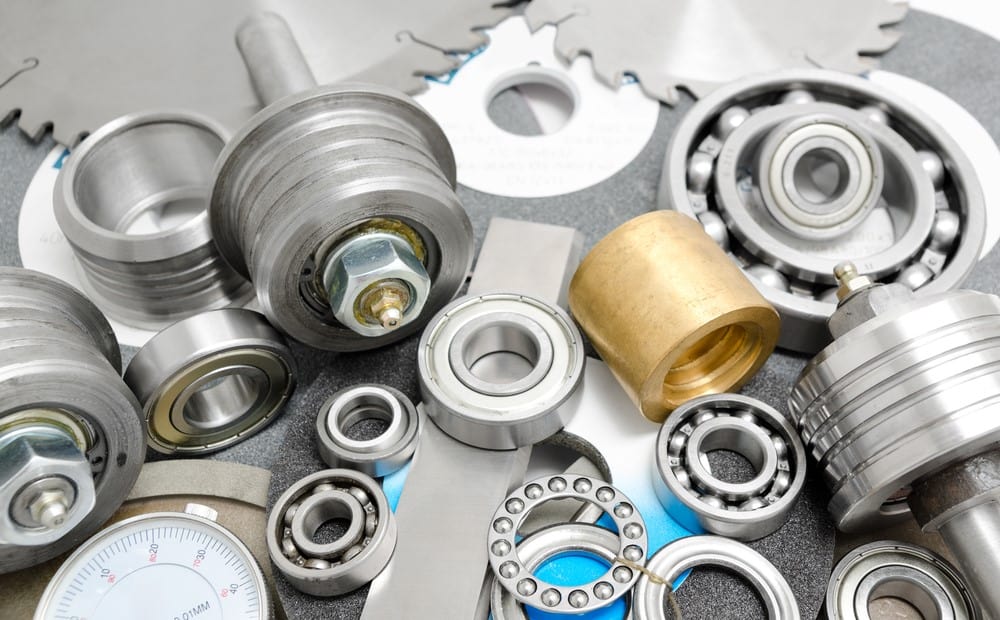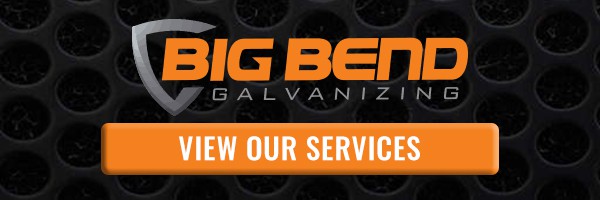Galvanized steel can be paired with many other metals. Specialized construction and fabrication needs may put galvanized steel in contact with stainless steel, aluminum, copper, and other weathering steel.
The juxtaposition of galvanized steel with other metals can result in a condition called galvanic corrosion. Just as zinc protects iron from rusting processes by establishing tiny currents of electricity flowing from the zinc to the iron in the steel, zinc can establish an electrical current with other metals with which it is in contact. In some pairs of metal, surface contact diverts the protective action of zinc to the other metal.
Galvanic corrosion is a condition in which size matters. It is not good engineering to have a small anode surface in contact with a large cathode surface. In other words, you don’t want a small galvanized part, coated in zinc, such as a galvanized rivet, in contact with a large cathode surface, such as a large sheet of untreated steel. The difference in electrical potential will pull a steady stream of electrons from deeper and deeper in the zinc coating of the galvanized rivet so that it loses its ability to protect the steel it coats. Putting galvanized rivets in a fabrication with untreated steel sets up eventual failure of the rivet.
On the other hand, a large anode surface in contact with a small cathode surface will stay stable. A stainless steel rivet attached to a plate of zinc will hold up for decades. That’s because most of the surface area of the rivet is in contact with zinc, which protects it.
Let’s take a look at the problems and potentials of some common combinations with galvanized steel.
Copper and Brass
Contact between galvanized steel and either copper or brass is a setup for rapid corrosion, especially in a humid environment. It is not even a good idea to have galvanized steel in close proximity to copper or brass; runoff water, especially in locations subject to acid rain, can carry enough copper to erode the zinc coating on galvanized steel.
If it is not possible to avoid contact of brass or copper and galvanized steel, it is important to insulate the two metals so they are not in electrical contact. Joint faces can be protected with non-conductive gaskets. Insulate grommet-style fasteners are a must for connections. The designer must make sure that water from rain and melted snow or any other source flows from the galvanized surface to the copper or brass surface, not the other way around.
Stainless Steel and Aluminum
In conditions of low or moderate humidity, there are no conductivity issues between galvanized steel and stainless steel or aluminum. However, in marine environments and in conditions of constant high humidity, it is important to insulate galvanized parts from either aluminum or stainless steel.
Weathering Steel
Placing galvanized bolts in unprotected steel is largely unproblematic. The galvanized bolt will form a layer of rust that protects it from further sacrificial action.
Where the steel is used makes a big difference in the severity of problems caused by metal-on-metal design. In a rural setting, almost no metals erode galvanized steel. In salt water, almost all metals austenitic cast iron, chromium, gold, gunmetals, nickel, nickel-copper alloys, nickel-chromium- iron alloys, nickel-chromium-molybdenum alloys, nickel silver, platinum, rhodium, silver, hard (but not soft) solders, tin, and titanium — erode galvanized steel.
If you have questions about corrosion, it really pays to ask an expert. Contact us with your questions at any stage of your project so we can give you the galvanized steel you need.

